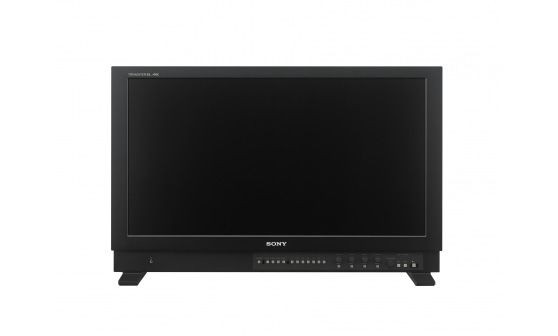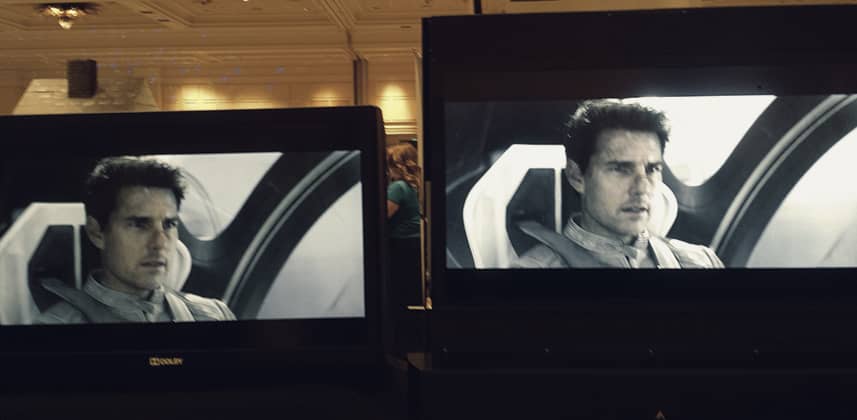| Series |
|---|
Updated June 2018 – This article has been updated to fix broken links. A few tweaks in language have been updated to keep it current (without detracting from it’s ‘first look’ feel when written in 2015).
Day 8: 25 Insights in 25 Days Holiday Marathon
Background Info & Two Conversations About HDR
HDR is on my mind these days, and as I mentioned on the MailBag Episode to kickoff the 2015 Mixing Light Holiday Marathon, I’m starting a 7 day ‘HDR test’ this week.
What I mean by that, is a longtime client who does a lot of large scale installation type projects (think museums) is trying to see if they want to do an upcoming project in HDR.
Fortunately for me, this means that for the next week I get to experiment and play with HDR – grading some sample material using a dedicated HDR reference monitor (more on that below) without the pressure of an actual deadline.
My client has given me the time with their footage to get comfortable with HDR – see what works, what doesn’t work and most importantly – learn as I go!
By the way, this is the same client that allowed me to learn stereoscopic 3D grading under a similar set of circumstances, so yes, I’m very lucky to get to learn about new technology and a new grading approach – while getting paid (10 cents on the dollar, but paid none the less).
Over the next couple weeks, I’m exploring HDR grading in more depth from some background info and talking to a couple industry experts (this Insight), to the essentials of getting setup for HDR grading in Resolve and Premiere Pro (which is possible in the latest CC 2015 update).
When 2016 comes around, and I have some more experience under my belt with HDR, I’ll add to these Insights covering creative decisions, and more specifics about grading tools while working with HDR material.
I can’t stress enough that for nearly everyone in our industry HDR is new – everyone is still learning (even the experts), and everything from the standards to gear & grading approaches all are in flux. With that said, I think HDR (with UHD+ resolutions) will fundamentally add something to the images that I work with – and that’s a good thing.
Let’s dive in.
So What’s HDR?
Put simply, HDR or High Dynamic Range video is all about expanded contrast compared to SDR or Standard Dynamic Range video and how we’re able to view that expanded dynamic range.
You might be thinking about photographic HDR techniques that attempt to merge multiple exposures into the range of current displays, or you might be thinking about recording capabilities like HDRx from RED that allow a colorist to combine exposures from a normally exposed track and an underexposed track to essentially increase the apparent dynamic range of a shot.
Neither of these approaches are the HDR everyone is talking about.
HDR video that is such a hot topic these days allows from a single exposure, a sometimes extreme dynamic range to be displayed on a compatible display.
While the best of breed cameras on the market are capable of capturing 13-16 stops of dynamic range, SDR displays are only capable of displaying about half of that dynamic range (this is somewhat of a debate). HDR displays therefore allow for more of the information captured by modern camera sensors to actually be shown on the display rather than squeezing that information into a small subset of dynamic range.
So…Are There HDR Cameras?
No not really.
At least none that I know of that are specifically marketed that way (marketing folks, don’t start!).
As camera sensors have improved over the years, their dynamic range capabilities have also improved. While 10 stops might have been phenomenal only a few short years ago, high-end cameras are now able to record 14,15, 16+ stops of information. That ability makes cameras already on the market like Alexa’s, REDs, & Sony’s all capable of recording enough information suitable for HDR work because they can record 10bit+ Log/Raw.
Want a single reference to check out the most popular camera specs including dynamic range? Check out this PDF from Gary Adcock & Chicago’s Fletcher Camera
The issue with our current reference display standards is we’re really putting all of that dynamic range into a smaller ‘container’ which limits the perceptual impact that the recorded information could have on a viewer.
It’s All About The Display?
Yes…
While that’s simplifying things drastically (especially on the math side) HDR video is all about the expanded dynamic range capabilities of an HDR display.
Instead of being limited to the typical 100 nits/29fL of an SDR reference display, HDR displays can display 300, 500, 1000 and even 3k, 4k nits! One day, displays capable of 10k nits are expected, but currently need a power station built for a small city to work!
The thing about an HDR display is that peak brightness is not for the entire screen, but rather for a small portion – with 10% being common. So HDR while being about expanded dynamic range, really shines in how it handles bright highlights.
That raises an interesting point, currently there are are LCD/LED displays that can easily pump out 300-400 nits, but are not considered HDR. On these displays as the output gets brighter so do the darker portions of the display – making expanded contrast/dynamic range a moot point.
For my testing this week I’m using the Sony BVMX300 30′ 4k HDR OLED reference display. After 12 hours of use, this display is proving impressive. You can read more about this display at Abel Cine’s website.
Display companies all over the world like Vizio, Samsung, & Canon are all working on HDR capable displays for both professional & consumer use.

The Standards
Like a lot of things in our industry, there is a race to standardize and codify what is HDR and what is not. Furthermore, a lot of this standardization has nothing to do with the reference environment, but rather delivery to the home and that’s a little outside the scope of this Insight.
There is no doubt in my mind that Dolby has been, and will probably continue to be, a champion on HDR with their Dolby Vision system.
SMPTE in large part based on the work that Dolby did developing the PQ EOTF curve (here’s a PDF from a SMPTE webinar), has standardized things with SMPTE ST-2084 (along with HDR metadata with ST-2086). Many manufacturers are following this standard and with the head start on HDR that Dolby has, the industry for the moment, has embraced 2084/Dolby Vision more than other HDR proposed standards.
While Dolby Vision is very compelling it’s based very much on metadata. Colorists can add scene by scene metadata data using a special hardware box from Dolby (where at the moment access seems tightly controlled is opening up and moving to software-based). Indeed, while the PQ Curve used in ST.2084 and Dolby Vision are the same, Dolby Vision as a system, is distinguished by the use of metadata. One mistake that a lot of people are making (including myself all the time!) Is referring to St.2084 and Dolby Vision as the same thing because of the PQ curve they share. Technically this is incorrect.
What about other standards?
The BBC, along with NHK, have proposed a different HDR standard called HLG or Hybrid Log Gamma (download the BBC PDF White Paper). There are two very interesting things about this standard:
- First is that due the nature of the standard (a standard gamma curve on the darker portions of the image, and a log curve on the brighter portions of the image) it’s not display specific – meaning that content mastered for a 4000 nit HDR display should look good on a 400 nit display or even an SDR display using HLG.
- Second, the HLG proposal doesn’t depend on metadata exchange between a set and the content provider – making it potentially much easier and less costly to implement.
I’m just scratching the surface on these and other proposed standards and couldn’t do them (mathematical) justice even if I wanted to!
The important thing to understand is that to a large degree, the industry as a whole is still analyzing, debating and testing these and other standards. Like many things in our industry, the easiest and most cost effective way of implementing HDR to the masses will probably win out.
Two Chats With Two Experts
It’s good having friends!
Bram Desmet, the CEO of Flanders Scientific Monitors and Juan Salvo are not only good friends of MixingLight, but also great friends of mine who both have put up with my non-stop questions about HDR!
Recently, I sat down with both of them to discuss HDR – what it is, gear, standards and some of the creative uses of HDR?
I learned a lot from both of them, and luckily I recorded my talks with each of them so you can learn more about HDR too!
Bram comes to the discussion with the perspective of display manufacturer and he has the technical prowess to know what’s possible and what’s not. Juan, who also has fantastic technical chops is a professional colorist and can add to the creative side of the discussion.
Below, please find the two chats – please keep in mind these conversations are on the longer side – about 22min with Bram, and 30min with Juan – perfect for your next roundtrip commute!
Before you listen – I’m sorry about the semi-frequent drop outs on Bram’s audio. For some reason the Internet/Skype Gods were not smiling on us the day we recorded and despite our repeated best efforts and fast connections on both ends,we still experienced some issues, but as always, Bram’s perspective is great.
Something to add to the discussion? Please use the comments below.
-Robbie
HDR Essentials With Bram Desmet:
HDR Essentials With Juan Salvo:
Learn More About How to Create HDR and Dolby Vision
- What Is HDR and Dolby Vision and How Do You Create It? : This Flight Path Guide shows you all the Insights we have on Mixing Light about creating HDR and Dolby Vision content. Plus, it links to key external resources on this topic.


